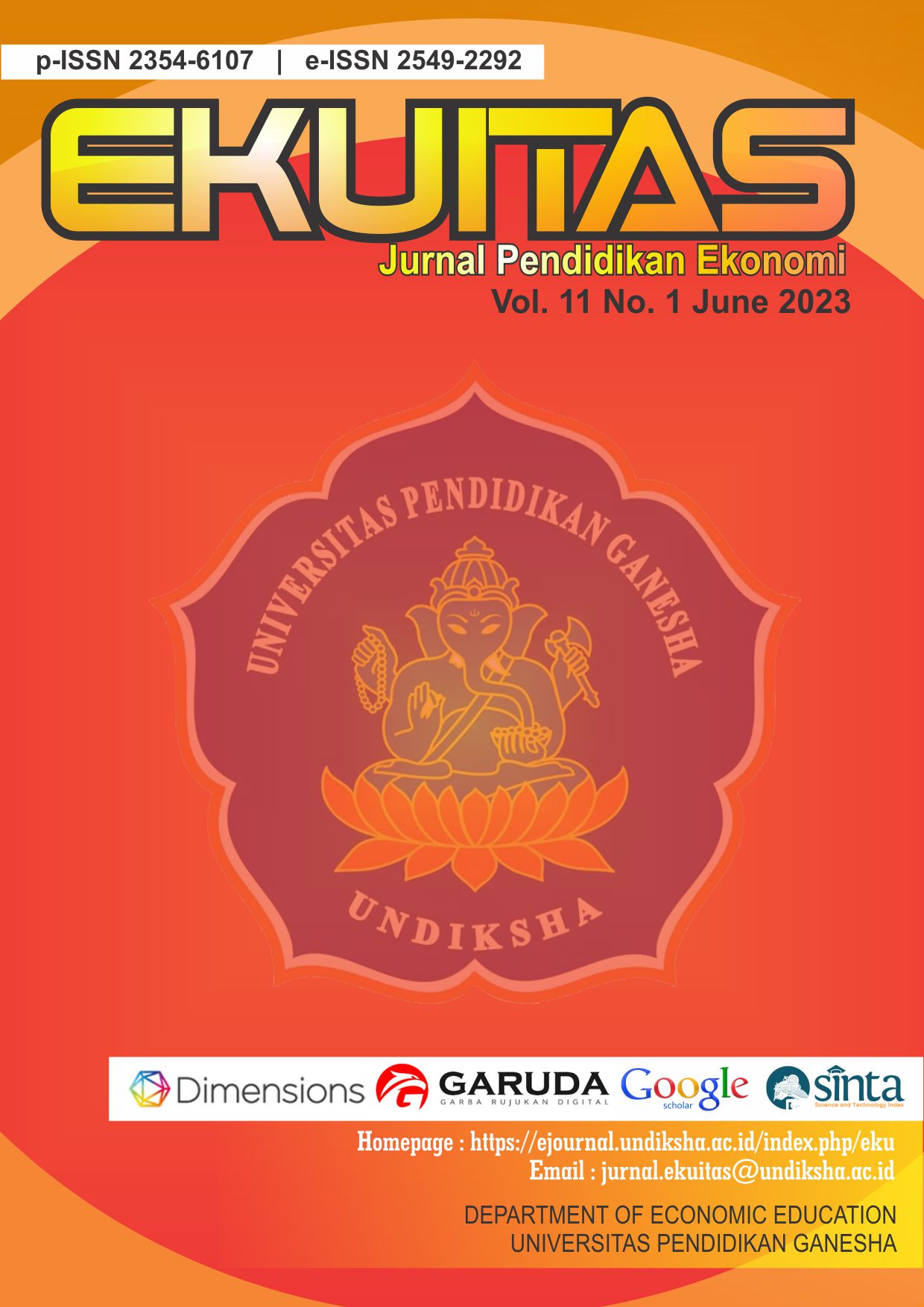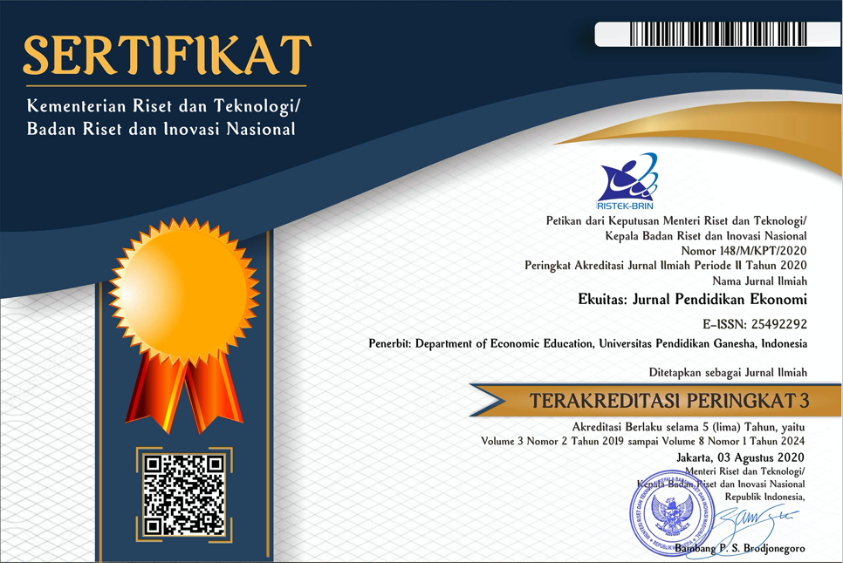Relationship Between Working Hours and Gojek Driver Income in Denpasar City
DOI:
https://doi.org/10.23887/ekuitas.v11i1.65768Keywords:
Gojek, hours of work, incomeAbstract
The purpose of this study was to determine the working hours and income of GOJEK drivers in Denpasar, Bali, as well as the relationship between working hours and income of GOJEK drivers in Denpasar, Bali. This type of research is quantitative research using a correlative research design. The population of this study consisted of 1275 GOJEK drivers in the city of Denpasar. The sample for this study was determined using the Slovin formula which determined 304 GOJEK drivers in Denpasar City. Data collection using a questionnaire was analyzed using descriptive analysis and Pearson Product Moment correlation analysis using SPSS 24.0 for Windows. The results showed that the working time of GOJEK drivers in Denpasar Bali was 26 people (8.55%) in the high category, 178 people (58.55%) in the medium category and 100 people (32.89%) in the low category. ) very high category of 20 people (6.58%), high category of 26 people (8.55%), medium category of 154 people (50.66%), low category of 86 people (28.29%) and very low category of 18 people (5.92%), and length of service has a significant relationship with the income of GOJEK drivers in Denpasar. The city of Bali has a correlation value of 0.787 and a significance value of more than 0.000 less than α = 0.05.
References
Afrida, B. R. (2003). Ekonomi Sumber Daya Manusia. Ghalia Indonesia.
Chung-cheng, L. (2003). A Backward-Bending Labor Supply Curve Without an Income Effect. Oxford Economic Papers, 55(2), 336–343.
Jura, D. C., Palar, S. dan W., Sumual, J. I. (2016). Pengaruh Kenaikan Harga BBM dan Jumlah Penumpang Terhadap Pendapatan Sopir Angkot di Kota Manado Tahun 2015. Jurnal Berkala Ilmiah Efisiensi, 16(1), 538–548.
Nazir, M. (2010). Metode Penelitian. Ghalia Indonesia.
Rantau, K. (2018). Pengaruh Umur, Jam Kerja dan Jumlah Tanggungan terhadap Pendapatan Ekonomi Produktif Kepala Rumah Tangga Miskin di Desa Subamia Kecamatan Tabanan.
Rusmusi dan Maghfira, A. N. (2018). Pengaruh Modal, Jam Kerja dan Lama Usaha terhadap Pendapatan Pedagang di Pasar Ikan Hias Mina Restu Purwokerto Utara. Jurnal Ekonomi, Bisnis, Dan Akuntansi (JEBA), 20(4), 1–9.
Sholeh, M. (2007). Permintaan dan Penawaran Tenaga Kerja serta Upah: Teori serta Beberapa Potretnya di Indonesia. Jurnal Ekonomi Dan Pendidikan, 4(1), 62–75.
Simanjuntak, P. J. (2001). Pengantar Sumber Daya Manusia. LPFE- UI.
Solihin, Achmad dan Sukartini, M. (2014). Hubungan Upah dan Penawaran Tenaga Kerja Supir Taxi di Surabaya. Jurnal Ekonomi Kuantitatif Terapan, 7(1), 60–72.
Sukirno, S. (2000). Pengantar Teori Mikro Ekonomi. Raja Grafindo Persada.
Zuhriski, H. (2008). Analisis pendapatan pedagang sayur keliling di Kelurahan Tegalega Kota Bogor. Institut Pertanian Bogor.
Downloads
Published
How to Cite
Issue
Section
License

This work is licensed under a Creative Commons Attribution-ShareAlike 4.0 International License.








